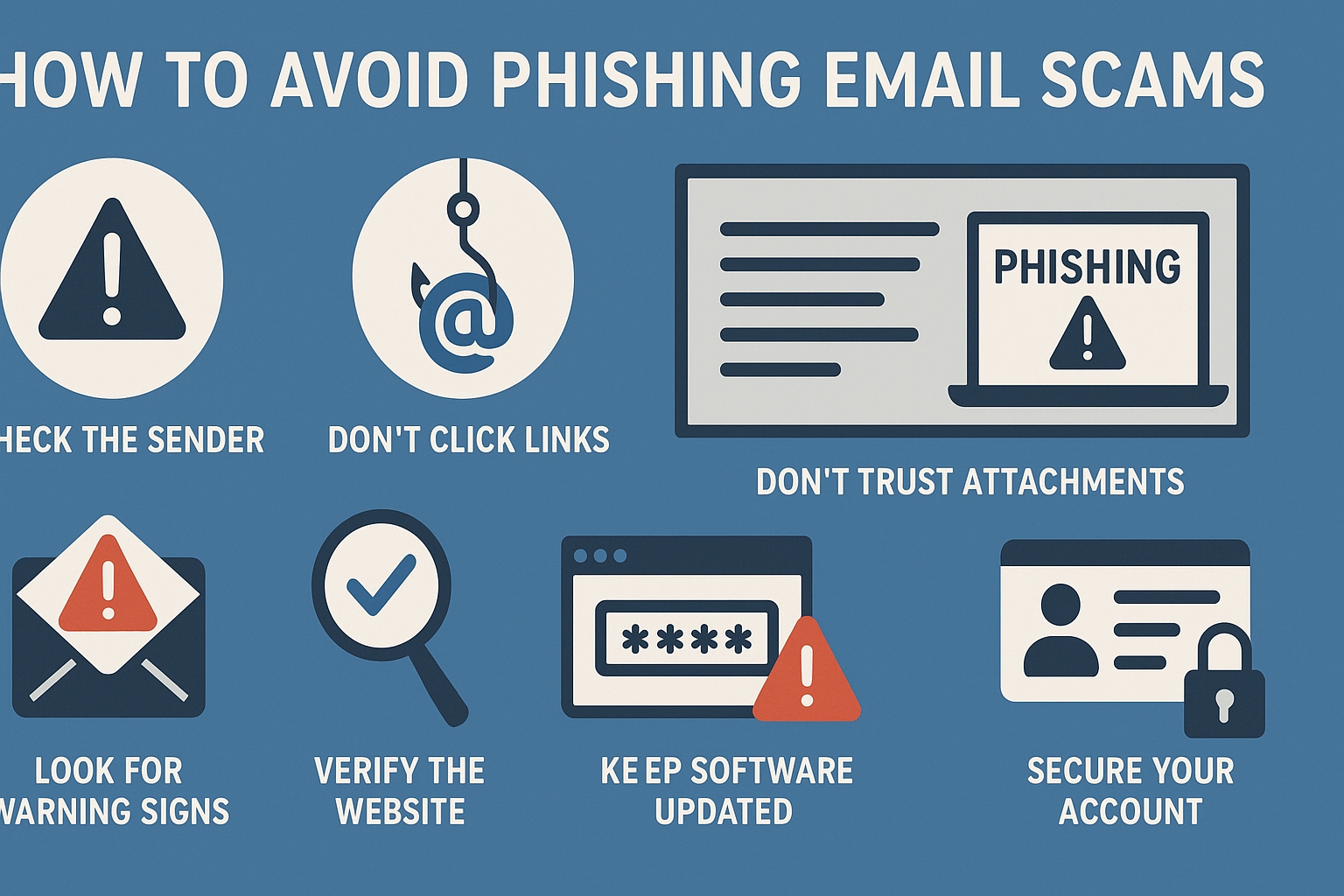
Overview: Are you concerned about yourself related to email scams? As it is right to ask or get help you face this. Nowadays, phishing attacks have become one of the most common and dangerous types of cyber attacks. Everyday, people receive malicious fake emails from what they believe is a trusted source such as banks, popular services, and even friends. These scams can have real consequences from financial loss and identity theft to illegal access to personal or business data. To deal with this, read our article to know the cause, and what are the ways to find out and avoid email scams.
Reasons Behind Phishing Email Scams
Phishing is ultimately an attack that targets the human being and the trust that we have on other people. Below are the important points for phishing scams.
Using this, hackers can attempt to steal your usernames and passwords.
A number of phishing emails have evolved around these false invoices, false winnings in a lottery, or requests for payment in another name.
A malicious activity or link is attached in a phishing email that automatically installs spyware, or trojans into your system.
You have your personal details scraped up such as names, addresses and phone numbers. Scammers use this as an illegal way to sell on the dark web.
Done to compromise company emails in order to infiltrate internal systems or extract money.
Typical Signs of a Phishing Email
So here’s a list of how to recognize a phishing attempt in a few seconds.
The sender's email address is unsure or unknown to you.
Don’t fall for an email which starts with “Dear user, or Dear customer”.
If you find any bad grammar and spelling mistakes.
Written any aggressive or threatening words.
Links inside your emails not matching the official site.
Unexpected email attachments sent to you that are not related to you or your work.
Similar looking fake domains like amaz0n. Com and similar ones.
How to Avoid Phishing Email Scams? Manual Solutions
Here are some tips to avoid phishing acts:
1. Carefully Inspect the sender’s Email Address
Always check the email addresses of the sender before opening it. Try to watch for small spelling mistakes or odd domain names.
2. Do Not Click on Unknown Links
Like you can hover over links to see the URL before clicking on it. Be clear if the address looks weird or disconnected from the message.
3. Avoid Downloading Attachments
Any file attachments from an unknown user may have malicious items. So, never download or open them unless you are sure of their existence.
4. Aware of Urgency Tactic
Emails that ask for urgent demand or threaten you somehow can have consequences. Don’t proceed further and try to apply phishing techniques like first check and verify.
5. Enable Two-Factor Authentication Feature
Turn on 2FA for your email accounts. So, even if an attacker does steal your credentials, he can’t get your data directly or that easily.
6. Maintain Relevant Software & Security Tools
Keep your antivirus, browser and operating system up to date. Temporary software usually contains leading anti-phishing tools.
7. Check It Out Officially
If you get an email from your bank or service provider, then go to the bank or service provider. One thing you can do is call the real customer service number to check it out.
8. Educate Yourself and Others
This should be spread and make people aware about these email scams. Train them by giving them phishing examples in order to recognize them.
9. Employ Email Filters
Turn on spam filters and rely on reliable email security systems. It will be able to detect and mark phishing attacks on its own.
10. Report Suspicious Emails
If you receive a suspicious email, then immediately report it to your email provider or IT department. It helps others not to be caught up in the same trap and spread awareness.
Professional Tip to Avoid Phishing Email Scams
Phishing attacks are done mainly through email addresses because that are very similar to valid ones. It can be hard to detect fraud in the very first place. That is why if you want to deal with it you should make sure to verify an email address before you take any action. There is one professional solution you can opt for SysTools Best Email Address Checker. The tool reads and verifies email addresses in bulk which allows you to identify phone contacts, mistyped addresses and non-existent users in real time speed. It also helps in keeping you safe from phishing scams and makes your communications secure.
Conclusion
Look, phishing email scams are increasing day by day. By spreading a little bit of awareness and following some best practices can rule them out. Always be aware of surprise emails which come to your inbox. Firstly confirm if there are any suspicious messages and defend your credentials with a strong authentication process. Prevention is your best backstop, after all. You will be able to protect your personal information and global identity from email phishing scams if you stay informed and calm.
